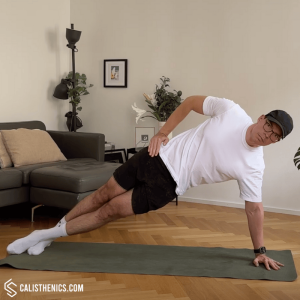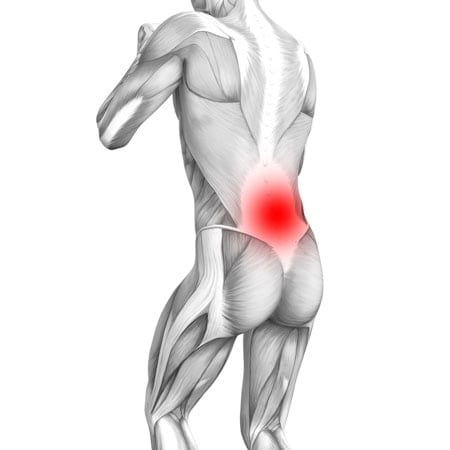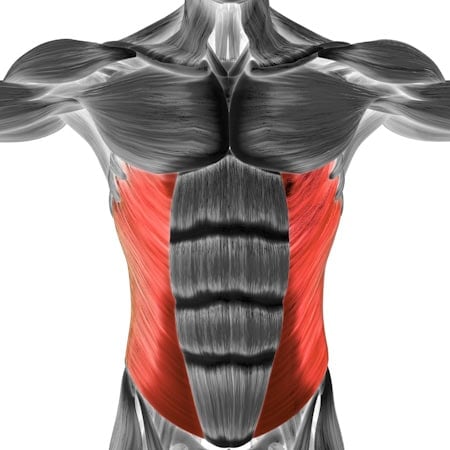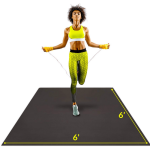Side Plank Pulses
How to do Side Plank Pulses?
Side plank pulses are a dynamic variation of the traditional side plank, where you lower and lift your hips in a pulsing motion while maintaining the side plank position. This exercise targets the obliques, glutes, shoulders, and core, providing an excellent way to build strength, stability, and endurance in the core muscles. The added pulsing motion intensifies the exercise by keeping the muscles under constant tension, making it an effective way to challenge both your core and shoulder stability.
Steps to Perform a Proper Side Plank Pulse:
1. Starting Position (Side Plank):
• Begin in a side plank position, with your body supported by one hand and the side of one foot.
• Extend your arm directly under your shoulder, keeping it straight. Your top foot should be stacked on top of your bottom foot, and your body should form a straight line from your head to your feet.
• Engage your core and glutes to stabilize your body and prevent sagging in your hips.
2. Lower Your Hips:
• Inhale as you slowly lower your hips toward the floor, moving just a few inches downward. Maintain control and avoid letting your hips touch the ground.
• Your shoulder and arm should remain strong and stable to support your upper body, while your core works to control the movement.
3. Lift Your Hips:
• Exhale as you lift your hips back up to the starting side plank position. Focus on squeezing your obliques and glutes as you raise your hips, keeping your body in a straight line.
• Keep the movement smooth and controlled, focusing on the engagement of your core muscles throughout the pulse.
4. Repeat the Pulsing Motion:
• Continue pulsing your hips up and down for the desired number of repetitions (e.g., 10-15 pulses).
• After completing the pulses on one side, switch to the opposite side to perform the same number of repetitions on the other arm.
Benefits of Side Plank Pulses
• Strengthens the Obliques: Side plank pulses specifically target the obliques, helping to build strength and endurance in these important core muscles.
• Improves Core Stability: By keeping your body stable during the pulses, this exercise enhances overall core strength and stability, which is essential for proper posture and injury prevention.
• Enhances Shoulder Stability: The supporting arm works hard to stabilize your shoulder throughout the movement, improving shoulder strength and reducing the risk of injury.
• Builds Hip and Glute Strength: The pulsing motion places extra emphasis on the glutes and hip stabilizers, helping to improve hip strength and mobility.
• Increases Muscular Endurance: The sustained tension from pulsing improves muscular endurance in your core, shoulders, and lower body, allowing you to maintain strength for longer periods.
• No Equipment Needed: Side plank pulses require no equipment and can be performed anywhere, making them a convenient bodyweight exercise for strengthening your core and glutes.
• Improves Balance and Coordination: The unilateral nature of the exercise challenges your balance and coordination, helping to enhance overall body control and stability.
• Great for Injury Prevention: Strengthening the obliques, glutes, and shoulders through this exercise can help prevent injuries, particularly in the lower back, hips, and shoulders.
Common Mistakes to Avoid
• Letting the Hips Sag: Keep your hips lifted throughout the movement. Avoid letting your hips drop too low or sag during the pulses, as this can reduce the effectiveness of the exercise and strain your lower back.
• Collapsing the Shoulder: Ensure that your supporting shoulder stays active and directly over your wrist. Avoid letting your shoulder collapse inward, which can lead to strain or injury.
• Using Momentum: Focus on controlled, muscle-driven movements rather than using momentum to pulse your hips. This ensures proper muscle engagement and reduces the risk of injury.
• Rushing the Pulses: Perform the pulses slowly and with control. Rushing through the movement can reduce muscle engagement and compromise your form.
Tips for the proper execution of Side Plank Pulses
Core Engagement: Keep your core tight throughout the exercise to stabilize your body and prevent your hips from sagging or rotating.
Shoulder Stability: Ensure that your supporting shoulder stays directly above your wrist and remains engaged. Avoid letting your shoulder collapse inward.
Small, Controlled Movements: Focus on small, controlled pulses. You don’t need to lower your hips too far—just a few inches to engage the obliques and glutes.
Breathing: Inhale as you lower your hips and exhale as you lift them. Proper breathing helps maintain rhythm and control during the pulses.
Neck Alignment: Keep your neck in line with your spine, looking straight ahead. Avoid looking down or arching your neck, which can cause strain.
Muscles worked when doing Side Plank Pulses
Primary Muscles:
•Obliques: The primary muscles engaged, responsible for lifting the hips and stabilizing the torso during the pulses.
•Glutes: The gluteus medius and maximus work to stabilize the hips and control the pulsing movement.
Secondary Muscles:
•Core: Abdominals and transverse abdominis work to stabilize the torso and maintain body alignment throughout the exercise.
•Shoulders: The deltoids and rotator cuff muscles stabilize the shoulder joint and support the upper body.
•Lower Back: Erector spinae muscles help maintain proper spinal alignment during the pulses.
•Quadriceps and Hip Flexors: Engage to assist in stabilizing the lower body during the pulsing movement.
Primary Muscle(s):
Secondary Muscle(s):
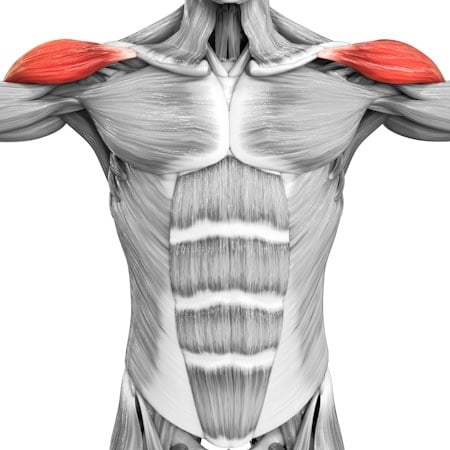
Lateral delt
Adjust the difficulty of Side Plank Pulses
How to make Side Plank Pulses harder?
How to make Side Plank Pulses easier?
How to make Side Plank Pulses harder?
To make Side Plank Pulses harder:
-
Increase Pulse Repetitions: Perform more repetitions per side (e.g., 20-30 pulses) to challenge your endurance and further engage your core muscles.
-
Add a Weight: Wear a weighted vest or place a small weight on your hip to increase resistance and make the pulsing motion more challenging.
-
Slow Down the Tempo: Slow down the pulsing motion, especially during the lowering phase, to increase time under tension and further engage the obliques and glutes.
-
Add a Leg Lift: As you perform the side plank pulses, lift your top leg a few inches off your bottom leg to increase the challenge to your core, glutes, and hips.
How to make Side Plank Pulses easier?
To make Side Plank Pulses easier:
-
Drop to Your Forearm: Instead of performing the exercise with your arm fully extended, lower onto your forearm to reduce the intensity on your shoulders and make the exercise more manageable.
-
Knee-Supported Side Plank: Perform the side plank with your bottom knee bent and resting on the floor while your top leg remains extended. This reduces the load on your core and shoulder while still engaging your obliques and glutes.
-
Perform Fewer Pulses: Start with fewer pulses (e.g., 5-8 per side) and gradually increase the number of repetitions as your strength improves.

